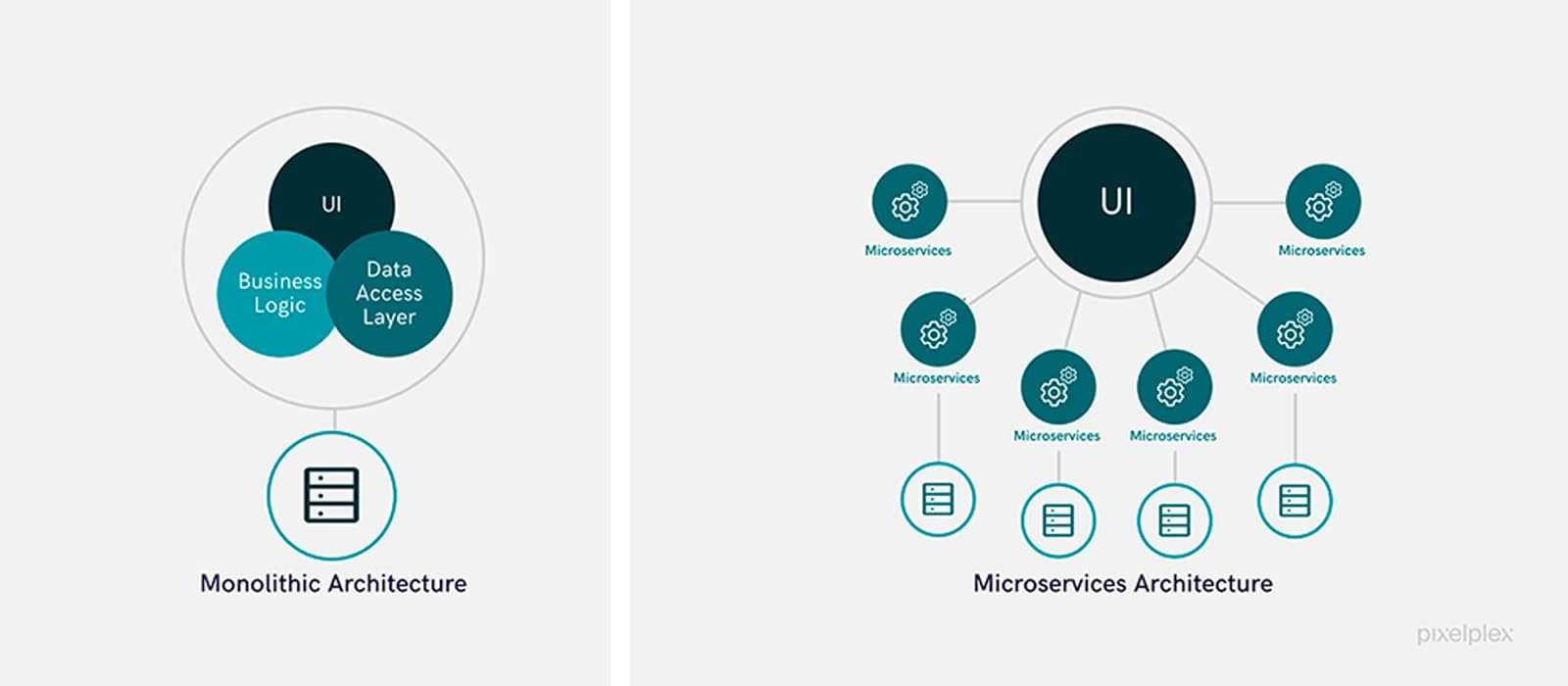
Home Office
Sooner or later, every company is faced with the problem of choosing a suitable software architecture. The correct approach to software development directly affects the efficiency and flexibility of the company and the success of the projects being implemented. This is the reason why it is important to make the right choice early on. Understanding the advantages and disadvantages can play a key role in the development of quality software products. Read the article and choose the right approach for your company. Do not be afraid of diving into this topic, since it is as easy as choosing between Best Proxy Servers.

Difference between monolithic architecture and microservices architecture”, source = https://pixelplex.io/blog/monolithic-vs-microservices/
What is Monolithic Architecture?
A monolithic application is delivered with a single deployment. It means that the project has a single codebase and each update needs to deliver the entire application, not a separate block of code. So, there is a single executable file that performs all the server-side functions of the application. The monolith consists of the UI layer, business logic and data access layer. The monolithic product resides on the server, where it handles HTTP requests, executes logic while interacting with the database.
Advantages and Disadvantages of Monolithic Approach
Pros:
- You can quickly implement business logic without wasting time on server-to-server communication issues.
- Simplify development and deployment by integrating tools that simplify the development process. If the application is small, then developers can save time by deploying the entire application at once, rather than individual modules.
- Monolithic applications provide faster communication between software components because they share code and memory.
Cons:
As your application develops and grows, so does the codebase. This immediately entails several disadvantages:
- It is more difficult to understand the code, especially for new employees.
- Every update requires redeploying the entire application.
- It is more difficult to detect bugs and performance flaws in a cumbersome codebase.
- It is very difficult to implement new technologies because sometimes it entails rewriting the entire application.
- It is impossible to scale separately some part of the application in a monolith, so you need to know about the volumes in advance.
Verdict:
Due to the surge in popularity of the microservice approach, many consider monoliths to be outdated. However, this is not at all the case, and it is great for small applications with simple business logic. Monolithic software can be a perfect choice for you if your team has no experience with microservices. Monolith is the perfect choice for startups looking to launch a product quickly. However, the disadvantages of monoliths become a problem for large and rapidly growing companies. This has led to the development of microservices since 2010.
What is microservice architecture?
“A microservice architecture is a way of structuring a system in which multiple independent services communicate with each other in a specific way (usually through RESTful web services),” states Jaime Buelta, author of ‘Hands-On Docker for Microservices with Python’. The key difference between the two approaches is that while a monolithic application is a single cohesive unit, a microservice application is divided into smaller autonomous units that interact with each other.
Advantages and Disadvantages of Microservice Approach
Pros:
- Whenever possible, each module performs a separate function.
- You can use a different stack of technologies and add new ones without having to rewrite the code. For instance, the modules are implemented using various frameworks, programming languages, they can be executed in various containerization environments, virtualization in different OS.
- You can easily scale the application if needed.
- Shorter startup times and the ability to deploy microservices independently are beneficial for CI/CD.
Cons:
The more the application grows, the more microservices appear. This means that the correct interaction must be established between them. This task is not easy and can be a hindrance for small companies.
Verdict:
Microservices have become popular in recent years for a reason. Indeed, the possibility of simple scaling and the use of a wide technology stack cannot but attract giant companies. Nevertheless, for small teams, this may be superfluous, since the difficulties in setting up interaction are quite significant.
Making the right choice
The choice of software architecture depends on the needs of your company. If you need to quickly build an application, then a monolithic approach may be the right choice. This approach does not require a large initial investment, delving into the problems of integration, automation, and dependencies. You can also start with a monolith and move to microservices when your codebase gets too large and complex. This way you can ensure the flexibility of your product. Please note that both approaches are not trivial, and you should consider what suits your business best in terms of performance.






